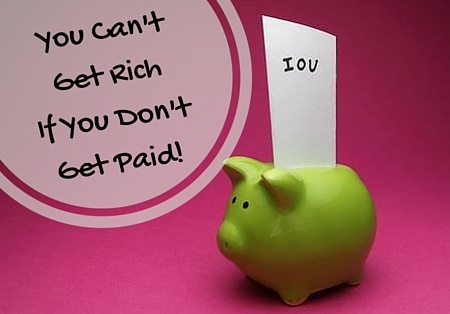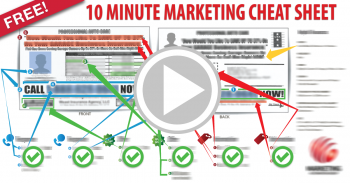Category Archives for Finances
Small Business Growth—How Fast is Too Fast?
 Start small, grow fast, make a million dollars, sell, repeat. Sound good? Not so fast.
Start small, grow fast, make a million dollars, sell, repeat. Sound good? Not so fast.
From start-up to corporate enterprise, the message is clear—grow fast. But, in an economy with unicorns starting to trip over themselves, the decision to accelerate growth has to be made cautiously.
As a business growth authority, I work closely with my clients to investigate when the time is right—or not—to make your small business a bigger business.
Knowing when to expand, and how to do it successfully, is critical to your growth plans, and maybe the survival of your business. First, let’s take a look at some signals that reveal it is not a good time to push fast expansion:
- Lots of sales, not much money: Most people believe the way to save or grow their business is to increase sales. All you need to do is bring home that next contract. Sales are great, but if you don’t have the infrastructure in place, you are not growing—you are just making more sales.
- You are a debt collector: You made more sales, but you are cash poor with a lot of sales on account. That is not growth, that is a potentially failing business.
- High expenses, low revenue: This one is easier to see. You are paying out more than you are pulling in. Scale up too fast, blow through your capital investment, and collapse. If new financing does not come through, yours is not the first start-up to become a wind-down.
- You ignore your business model: You’re doing pretty well in a niche business, have a couple of locations, and built buzz around the quality of your product and pleasant customer service. If some is good, more must be lots better. You obtain financing, sell out on your quality concept, and go big time with a chain of new locations. Your product and service reputation start to slide.
- Too much work, too little time: Although you, and key employees, work too much, you decide to gear up for growth. You are so busy that customers are complaining, and there are quality issues. But again, if you have more sales, you think you won’t have to work so hard.
Stop. These are signs of a business out of control, not one ready for growth. So how should you think about growing your business?
Steps for safe business growth
The right growth strategy for you is not the growth strategy that worked for somebody else. Though you may sell the same product, the similarity ends there. Your financial statement, goals, and history are different than the other guy or gal. That means your best move is to work individually with an advisor who knows business—and knows how to ramp up your profits.
Business growth and increasing revenue are not the same things. While you hope one leads to the other, I work with the whole picture when I talk to you about business growth. Depending on your unique goals, and spreadsheets, I might suggest steps that include:
- Segment: Are you serving the right corner of the economy? A close look at your product and your market shows whether you can further exploit your natural business niche. Looking at market segmentation means carefully understanding the type of client, or customer, you want. You are better off aiming your marketing and business development effort at a defined audience segment that wants to pay for your product, than blowing your brand budget on scattershot marketing to try and sell to the world. A refined focus on your true segment can earn you more profit.
- Service: Once you define your market, think about an additional service you can add to serve that market. Listen to your customers—what are they looking for? Where are they going after they spend money with you? Can you identify a parallel product or service that pushes your deliverables—but does not require you to start up a whole new unit? Working with a business advisor, and good market data, is a good way to approach this type of expansion.
- Partner, acquire, merge: Mergers and acquisitions are not just for big companies. Look around for other entrepreneurs who might offer a complimentary business, or service. Individually, your separate small businesses could do okay, or maybe struggle. Considering a partnership or an acquisition is a fast way toward growth and increased revenue if the fit is right, and the infrastructure merger is handled well.
Growth may look good, but not if your small business crumbles under the weight. When you are ready to expand, or looking for how to stabilize your business for growth, I hope you will contact me to talk about your best options for moving up. You can reach me at (585) 633-7563.
Yours in profit,
Bob Britton
You Can’t Get Rich if You Don’t Get Paid
 It is the ultimate business bottom line—no pay, no profit. If you are scraping by on IOU’s, it is time for a change.
It is the ultimate business bottom line—no pay, no profit. If you are scraping by on IOU’s, it is time for a change.
You work hard to run your business, produce a product, or provide a service, and deliver on time. You expect to turn a profit by being paid in a timely way. Unfortunately, small business does not work that way a lot of the time.
According to a recent survey by cash flow tech company Fundbox, about 64 percent of their small business clients are routinely paid late. And it is not necessarily that small businesses are always the culprits too stretched to pay on their bills. It is also big clients, like Walmart and McDonald’s, who routinely pay late. Go figure.
It is hard enough being an entrepreneur without working for nothing. When you make a sale—you need to get paid.
Taking care of business—tips to make sure you see the money
You have your own bills and employees to pay, you cannot spend another week wondering when the check is going to be in the mail from your big client. The longer an invoice goes unpaid, the less likely you are to be paid in full.
Take these tips to heart, and to the bank, when you want to get serious about a cash flow problem caused by late-paying clients:
- Know your customer: When you have been in business for yourself, it does not take long to develop a sixth sense for which clients are going to pay, and which are not. But you should not have to count on experience, or telepathy, to get paid for your time or products. If you develop and deliver goods, be sure you have a contract in place to protect your profit and spell out terms of payment. Consider building a discount into your price point for clients that pay early—and don’t think twice about a percentage penalty for late pays.
Some experts counsel against a late fee, saying it is just incorporated into the cost of doing business. Bottom line? You don’t want to be doing business with people that pay late! Small businesses cannot work for those who do not pay—make your message at the outset as you discuss initial delivery and payment terms.
Be sure to stay on a first-name basis with personnel responsible for processing your bids, and contract payments with your bigger clients. You’ll be the first to know about potential payment delays, and more likely to get paid on time.
- Make it easy: There are a lot of creative ways to make the payment process faster and easier. Use top notch invoicing software, or SaaS, to ensure your invoices are delivered electronically and on time. Work closely with new clients, especially bigger companies, which have slow-moving payment systems. Do your best to incorporate their payment needs into your system, but be sure that the conversation about the ways and means to pay on time takes place. Otherwise—you do not need this client.
Set up a merchant account, and take payment by electronic transfer or credit card. Be sure there is a clear understanding of delivery and payment terms to ensure you, and your customer, are free to build and expand a good business relationship—instead of spending frustrated days and weeks trying to get paid.
- Retainers and upfront money: A lot of professionals ask for a retainer until they are sure a new client pays on time regularly. For substantial work for a new client, or with an established client with a poor payment record, get a percentage of your fee upfront. No small business owner can really afford poor paying clients. Entrepreneurs who carry unsuitable clients often end up out of business, or in bankruptcy.
- But they aren’t paying: So you have a client that will not, or cannot pay. Talk to them in person. Make a visit if you can, instead of making a call. Get the lowdown on what it is going to take to get the bill paid—even at a discount. Offering any kind of payment incentive often greases the wheels enough to walk out the door with a check. Don’t do business with these kinds of companies. If it is your big client? It is time to diversify. Unless it is a big contract, legal action is an expensive option to pursue. Consider business mediation first. It is faster and cheaper.
Best tip? Develop and manage your client list into only premium customers. I have said it before, do not compete on market price. Compete for premium clients who pay the right price—on time. By offering special perks, attention, client care, and high quality service, you are developing the kind of customer who pays on time, every time. You do not want clients looking for a break on every bill. You want the ones who come to you because they know what to expect, and they are willing to pay for it.
From here on out? No more 90-day and up overdue, you just cannot afford it. Put the right structure in place, and start attracting the kind of customer that does not quibble about paying a fair price. When you need to market your services to the clients who pay—I hope you will call me at (585) 633-7563 for help. No small business owner can get rich on an IOU.
Yours in profit,
Bob Britton
Looking for Profit in all the Wrong Places
 Take Charge of the Numbers to Take Charge of Your Business
Take Charge of the Numbers to Take Charge of Your Business
I talked recently about numbers that tell us something about the current business climate. Now let’s talk about the numbers that make, or break, your business.
Dawn Fotopulos is the HiddenProfitProphet. I had a chance to sit down recently with this award-winning author, educator, and entrepreneur to talk about how small business owners can get a handle on their financial details, do better business—and make more profit. I got to know Dawn when she joined my MAG Elite Mastermind Group.
Dawn helps small business owners find profit where they least expect it—in their balance sheets. She wrote the best-selling book, Accounting for the Numberphobic: A Survival Guide for Small Business Owners, and offers great tips and advice on her website.
Smart financial moves—get the inside scoop from an expert
Talk to a mentor, advisor, or top talent in your field when you or your business drift. The later you look for help, the harder it is going to be on your business—and your profit. I work with professionals like Dawn to fine tune business plans and establish marketing strategies to crush their competition.
I talked to Dawn to get her take on financial questions common to all small business owners. Here are some of her responses to my questions. To learn more about Dawn’s great ideas—read her excellent book.
Q. At some point or other, entrepreneurs hit a wall. When struggling with their bottom line, what is the biggest mistake small business owners make?
A. Every business owner thinks if they’re having trouble paying the bills, they need more customers. They might very well be scaling an unprofitable business! In fact, that’s what many used car dealers are doing. They think if they sell more cars, they’ll make more money. It’s exactly the opposite. If you’re losing money on every deal, you really can’t make it up in volume.
Q. Do you find entrepreneurs are good with ideas, but challenged by their financial statements? If so, how are they challenged?
A. I took a poll at The New York Times Small Business Summit Conference over a five-year period. During that time, I asked 5,000 small business owners one simple question—“True or false, a Net Income Statement and a Profit and Loss Statement are the same thing.” Only one out of one hundred business owners knew that was true. That’s not a problem—it is an epidemic. Would you ever drive your car with your eyes closed? No. Then learn how to read your financial dashboard. By financial dashboard, I mean your Income Statement, Cash Flow Statement and Balance Sheet. These documents are key to running your business and making good decisions. No matter what business you’re in, you must be able to answer three questions:
– Are you making money?
– Do you have enough cash to pay the bills?
– Are you building wealth or destroying it?
Your financial dashboard will answer each of these questions.
Q. Do you encounter small business owners who are afraid of the financial work in front of them? Why do you think that is? What are they most afraid of?
A. They’re not afraid; they’re terrified.
It’s too intimidating. They feel like they have to become an accountant. If they’ve taken accounting courses, they never understood debits, credits and reconciliation. What if a business doesn’t need to learn how to keep the books—but just learn how to read their financial dashboard?
Many think their accountant’s job is to read their financial dashboard. Your accountant will not run your business any more than your mechanic will drive your car. It’s your job to navigate.
Your financial dashboard shows you how. Most people are intimidated because the topic is complex and often taught by very knowledgeable but really boring people. That’s why I wrote the book and had it illustrated by a Disney artist. It was time to make running a business fun, exciting and interesting again. If you look at the comments on Amazon, you’ll see many people who were once intimidated are now finally gaining the confidence they need to run profitable, cash-rich companies.
Q. You have written a well-received book about diving into financial details. Can you explain a couple of concepts from the book, such as what are the most important financial documents and how can these documents help a small business owner?
A. The Net Income Statement is like the speedometer in your car. How fast is your business producing profits? Is your business beyond the breakeven point (is it self-sustaining)?The Cash Flow Statement is like your gas gauge. It will show you how much cash is available to run the company and for how long. Your Balance Sheet is like an oil pressure gauge. Too little pressure (debt), and you don’t have ignition. Too much debt, and you’ll go bankrupt. The Balance Sheet is also the Net Worth Statement of the business. Every banker and investor scrutinizes this statement. Make sure you know how to read it, and improve on it from operations. These statements are your GPS for running your business. Think about it, if you want to get to your destination, wouldn’t it be helpful to have a path to get there? I can get to Ogden, Utah, by trial and error but it will take my lifetime that way. These financial statements, like a GPS, get to you the promised land of living off your own cash flow a lot faster.
Q. What are the basic steps an entrepreneur can take to manage these important details and create profit?
A. Gross margin. Gross margin. Gross margin. Ever watch Shark Tank? Like the sun rising in the east, every business owner is asked, “what are your margins” on their products. Why? Because margins drive profitability. There’s a lot more I can say to your question. The best thing to do is read my award-winning book, “Accounting for the Numberphobic; A Survival Guide for Small Business Owners.” It won “Best Business Book of 2015 in Economics” from Small Business Trends. The book takes you by the hand and explains, line by line, what’s happening in your business and provides you simple, no-cost strategies to fix the broken things. It should be mandatory reading for anyone going into business.
Q. Are there accounting and profit choices you would make differently for a products-based versus a service-based business?
A. Valuing time is perhaps the biggest challenge for service providers. Also, managing invoicing and billing becomes more complicated, especially for service providers who work on multi-phase projects. Time is your only recoverable asset so keeping track of that, especially as it relates to direct labor costs, is crucial.
I’ve seen many service providers who are so busy giving great service to their clients, they don’t track how much time that’s actually costing them. A large client could in fact be their least profitable client.
In either product or service businesses, the owners need to look at their gross margin two ways—by product or service and by client. For the business owners who have purchased my Hidden Profit Academy courses, they get this. That gives them visibility to really know what products or services are working hard for them and which ones to change or eliminate.
Q. In a downturn or even when the invoices have not yet been paid, how can small business owners maintain their cash flow?
A. First, you have to diversify your client base. If you only have one or two big clients, you’re at risk if either of them leaves or falls on hard times.
Second, you have to have two ways out of the room. Always apply for a credit line when you don’t need it, then you have it if cash gets tight.
Stay on top of your accounts receivables aging report like a hawk. Know exactly who owes you money, how much, and for how long. If any receivable ages beyond 30 days, the likelihood you’ll ever get paid goes down dramatically.
Learn how to collect outstanding debts from clients. This is a more important skill than learning how to sell. Business owner need to learn this early on. My book provides sample openings and dialogues to do this painlessly. Chapters 5 and 6 are worth the entire ten chapter book.
Q. You have talked about simple steps, “One Thing,” to add cash to your business account right away. Can you give us one or two tips?
A. Make sure your invoice includes not just the date of delivery, but what you delivered to your client. Remind them of what a great decision they made to hire you. You didn’t just build a website, you improved the customer experience and thus the client gained increased traffic and engagement. Once they read this, they can’t wait to pay the bill. Stop waiting too long to send the client an invoice. Invoice them weekly or bi-weekly. You’ll get paid faster and the client won’t be overwhelmed.
Q. What financial trends do you see with small businesses, the recovering economy, and a faster paced, more volatile market for goods and services?
A. Nimbleness is key. Don’t make or accept long-term commitments. Be on top of technology. Everything you can do to save time, decrease error rates, and to streamline daily processes is worth your investment. In terms of macro trends, I’m most concerned about central bank policy. No society in the history of man has survived currency debasement over the long haul. Just ask the Romans.
Take control of your business by understanding your real financial situation. Get good counsel about your financial dashboard—and your business or marketing plan—to make more money doing what you love. When you are ready to ramp up your income—call me at 585-633-7563.
Yours in profit,
Bob Britton



